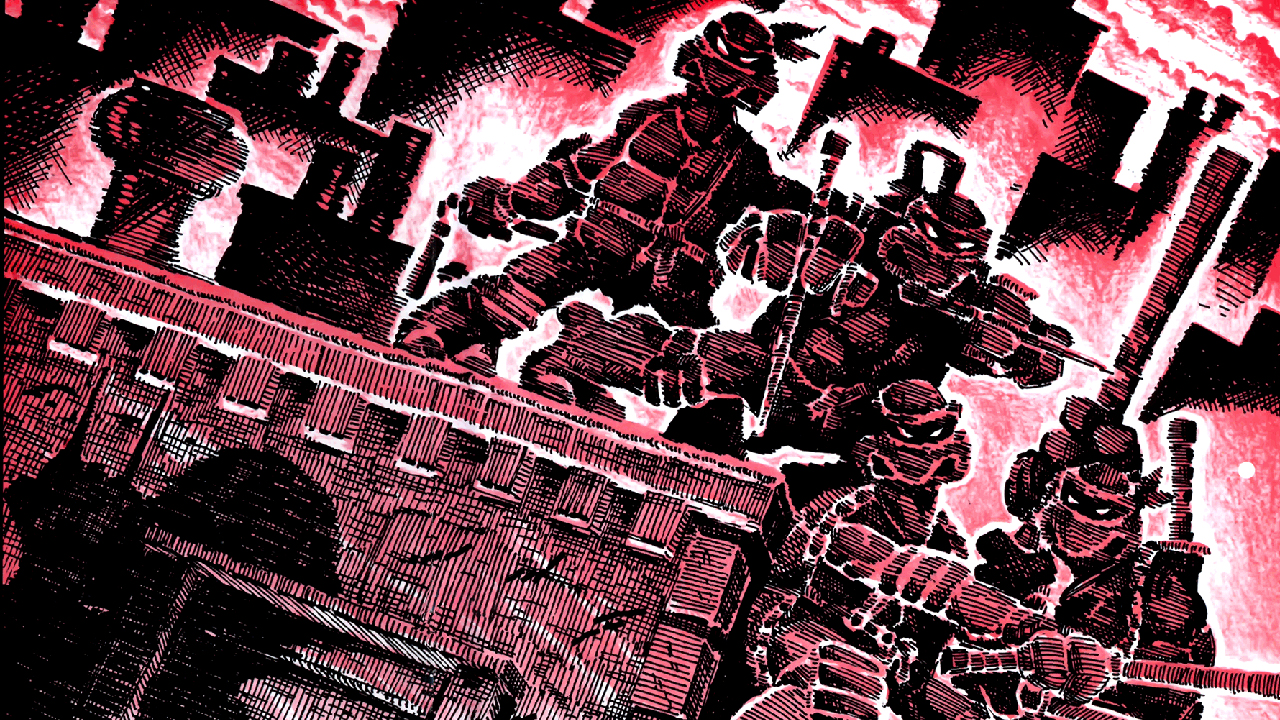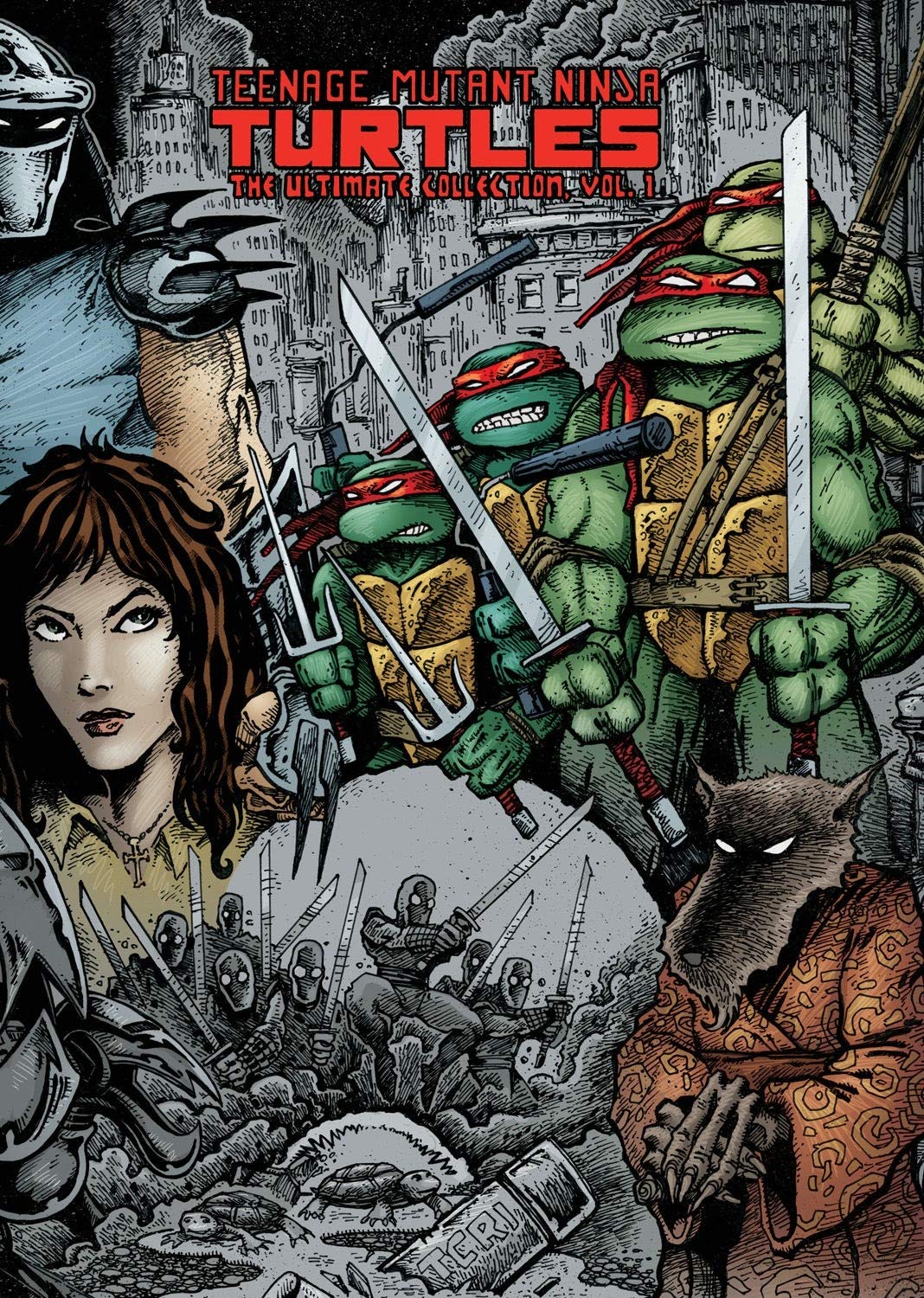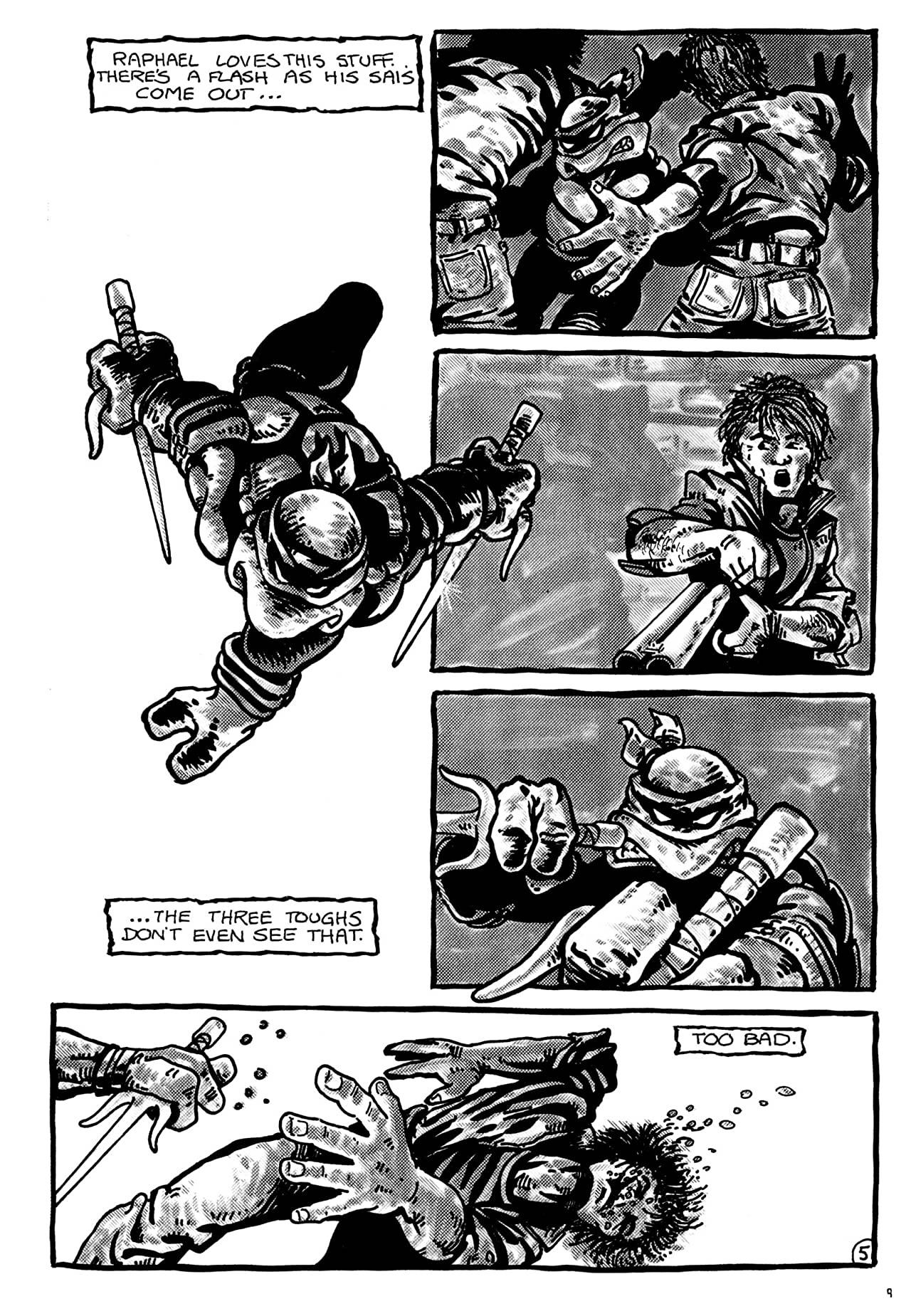Best Shots review: Teenage Mutant Ninja Turtles #1 - #7
As collected in Teenage Mutant Ninja Turtles: The Ultimate Collection Vol. 1

Batman's murderous streak, Hulk's grey skin, and Superman's limited powerset… reading the earliest issues of a legendary character is often like looking in a crooked mirror - familiar but just slightly off. Kevin Eastman and Peter Laird's Teenage Mutant Ninja Turtles aren't totally free from this phenomenon. The self-published series is moodily rendered in cloying black and white, the blood splatters freely and there's even a hint of nudity. Yet, in their rough independent beginnings, these are recognizably the Teenage Mutant Ninja Turtles. Even when they were sketches on an ordinary living room table in 1984, these guys came out fully formed.
Written by Kevin Eastman and Peter Laird
Art by Kevin Eastman and Peter Laird
Lettering and Design by Kevin Eastman, Peter Laird, and Steve Lavigne
Published by IDW Publishing
Lavishly bound in an oversized collection, IDW Publishing's TMNT Ultimate Collection vol. 1 collects the first seven issues of Mirage Studios' Teenage Mutant Ninja Turtles, as well as the Raphael one-shot published in between issues #3 and #4. The format is undeniably the best way to experience this strange slice of comic book history – printed on thick, off-white paper and bound in cloth, this is a reference-quality book that is built to last.

Eastman and Laird are not your standard creative team. They shared scripting, penciling, and inking duties on these eight issues, working in a style that is indistinguishable from each other. It's a genuine feat of synchronicity. Steve Lavigne takes over the lettering with #5, working strictly within the style set out in the first four issues. Of course, these guys were unknowns trying to break into the business. These first eight issues are not polished works. They're scrappy, with an undeniable energy that reminds us that creative ability isn't always about technical flair.
Don't get me wrong, Eastman and Laird can draw. Their backgrounds are detailed and atmospheric, their action sequences dynamic and their panel composition is always staged for maximum effect. Even so, a portfolio review at DC or Marvel would have seen these guys banished back to obscurity. It's something to ponder, especially now the industry often puts an inordinate pressure of expectation for artists to turn out realistic, detailed, and ‘on-model' work. Imperfections can add character.

This is a collection that proves that, in comic books, ideas reign. Even though Eastman, Laird, and Lavigne's lettering is littered with misspellings and uneven spacing, while the script calls to shove entire paragraphs of inelegant exposition into too-small spaces, the oversized 40+ page issues fly by. Narratively, these stories obey the rule of cool and very little else. Character is strong, the dialogue is unsubtle and exclamatory, and the plots just about make logical sense. Everything is a vehicle for wild characters to pinball across the page in. The panel layouts themselves are unique and imaginative, with inspired use of negative space and non-standard panel shapes that add extra spice to already exciting battle scenes.
Issue-by-issue, Eastman and Laird introduce an extra piece of TMNT pie. The Foot Clan, Shredder, the Utroms (although not named yet), Casey Jones, Baxter Stockman, the Triceratons… they're all here and fully formed. It's easy to see why the media machine latched onto these characters and didn't let go – they're pure fun.

Eastman and Laird's artwork is incredibly thickly inked, rarely deviating in line length, to produce an incredibly heavy and dark atmosphere. Although the backgrounds are dingy, accurately depicting that grimy New York that was all over '80s media, the turtles themselves cheer and grin and laugh. Sure, they shed a little more blood than their animated counterparts, but character-wise they are incredibly similar to how they would later end up. Leonardo leads. Donatello does machines. Raphael is cool but rude. Michaelangelo is a party dude.
Get the best comic news, insights, opinions, analysis and more!
The Ultimate Collection Vol. 1 features annotations from the creators after each issue, outlining their creative process and pointing out a few Easter Eggs. Jack Kirby is mentioned in almost every issue, and the influence dial turns progressively from Frank Miller to Star Wars as the series continues. Make no mistake, the Teenage Mutant Ninja Turtles are science fiction. They always have been.
All in all, IDW has done a stellar job packaging this unique slice of comic book history. Teenage Mutant Ninja Turtles: The Ultimate Collection Vol. 1 is proof that a killer idea and a wild sense of style can overcome any obstacle.
Read the best TMNT stories of all time.
Oscar Maltby has been writing about comics since 2015. He has also written comic book scripts for the British small press and short fiction for Ahoy Comics. He resides on the South Coast of England but lives in the longbox.



